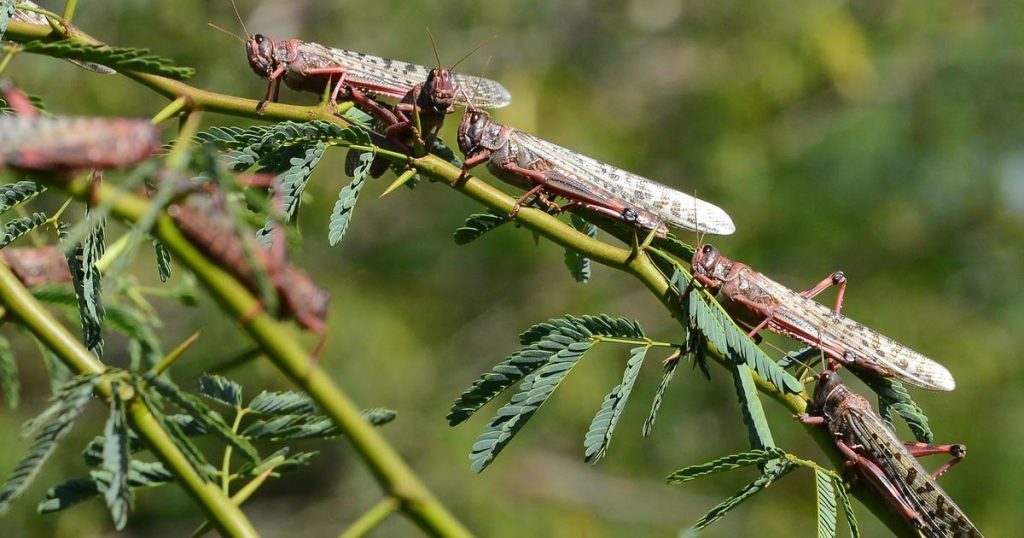Bhubaneswar: The state government Sunday alerted farmers about a possible locust invasion in the state and advised them to take precautions, while stressing that there is no reason to panic.
There is a likelihood of Odisha becoming victim to locusts, which have attacked states like Rajasthan, Maharashtra, Madhya Pradesh and Uttar Pradesh. Farmers have been asked to remain alert, state Agriculture Minister Arun Kumar Sahoo said.
Stressing that there is no reason to panic, the minister said that the state government as well as the Odisha University of Agriculture and Technology (OUAT) have already issued advisory for dealing with any locust invasion.
As per the latest information, the migratory pests are likely to enter west Odisha districts such as Sundargarh, Bargarh, Kalahandi and Bolangir and cause damage to vegetable plantations and trees, he said.
Necessary measures were being taken to create awareness among the farmers, while the movement of swarms of locusts will be closely monitored at district and block levels, Sahoo said.
Dean of Directorate of Extension Education under OUAT LM Gadnayak said steps were being taken to issue standard operating procedure (SOP) to deal with possible invasion of locusts.
As per indications from the Centre and Food and Agriculture Organisation (FAO), locust swarms are likely to reach Odisha in June and may affect crops in several areas, particularly in the western region.
Desert locusts, mostly found in East Africa, eat crops and the green part of trees. Plenty of rainfall in East Africa has helped the insects breed and multiply. These insects have entered Iran, Pakistan and now several states in India.
The minister said though Odisha has not encountered any locust attack in recent years, the government is prepared to deal with any situation.
Farmers residing in areas bordering other states have been advised to remain alert and and take steps suggested by the OUAT and the government, he said.
Sahoo said the farmers have been advised to spray 200 litres of a solution of five per cent neem seed kernel per acre of land during the afternoon to prevent locust attack. They can also prepare a solution by adding 300PPM neem insecticide in 200 litres of water and spray it on the crop, he said.
The OUAT, in its advisory to farmers, has also asked them to follow the neem-based treatment. It further said that farmers can beat tin cans to drive away the locusts. Farmers can wield branches full of thorns to avoid locust attack.
The OUAT advisory stated that farmers can spread polythene sheets under trees with locusts in the evening and shake them hard so that the insects fall on the sheets. They can then collect these locusts and put them in kerosene mixed water to kill them.
Since locusts stop movement and settle on vegetation after evening, the farmers can also hit branches of trees and crops to remove the insects and destroy them by setting fire.

